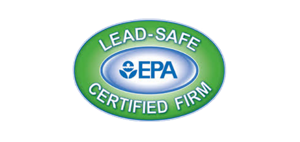If you’ve experienced water damage in your property, it’s crucial to act quickly to mitigate any negative impacts. Time is of the essence when it comes to water damage, so taking immediate action can make a significant difference in the extent of the damage.
In this section, we’ll discuss the immediate steps you should take after water damage, including assessing the situation, stopping the water source and electricity, removing excess water, and salvaging and drying your belongings.
Key Takeaways:
- Act quickly to minimize the negative impacts of water damage.
- Assess the extent of the damage, including identifying the source of the water.
- Stop the water source and electricity to avoid any hazards.
- Remove excess water using a wet vacuum, mop, or towels.
- Salvage and dry your belongings to prevent further damage.
Assess the Situation
When facing water damage, the first step is to assess the situation. You need to identify the source of the water and determine its quality.
- Assess the Extent: Take note of any visible damage to your property, including walls, flooring, and furniture. This information helps determine the extent of the damage and what needs to be done after.
- Identify the Source: Is the water from a broken pipe or a natural disaster? Is it clean or contaminated? Knowing the source of the water helps determine the appropriate actions to take.
If you’re unsure of the extent of the damage or how to identify the source, call a water damage professional immediately.
| Assessment Checklist | Actions |
|---|---|
| Extent of Damage | Take note of all visible damage to your property, including walls, flooring, and furniture. |
| Identify the Water Source | Identify the source of the water and determine if it is clean or contaminated. |
| Call a Professional | If unsure of the extent of the damage or how to identify the source, call a professional immediately. |
Stop the Water Source and Electricity
Once you have assessed the situation and determined the extent of the water damage, it is crucial to stop the water source if it is still flowing. The longer the water continues to flow, the more damage it can cause to your property.
If you can locate the main water valve, turn it off to stop the water source. If you are unsure or unable to find the valve, contact a professional plumber as soon as possible to assist you. Time is of the essence, and the longer the water continues to flow, the more damage it will cause to your property.
Please note that if there is any risk of electrical hazards, it is important to turn off the electricity in the affected areas before removing any water. This is crucial for your safety and to prevent further damage to your property.
Remove Excess Water
Once you have assessed the extent of the water damage, the next step is to remove any standing water from your property. This will help prevent further damage and reduce the risk of mold growth. Here are some methods you can use to remove excess water:
| Method | Description |
|---|---|
| Wet Vacuum | Use a wet vacuum to suck up water from your floors. This method is most effective for removing large quantities of water. |
| Mop and Towels | Use a mop or towels to soak up water from your floors. This method is best for smaller areas or hard-to-reach spots. |
| Professional Equipment | If the water damage is extensive, consider renting professional-grade equipment such as pumps, dehumidifiers, and air movers to expedite the drying process. |
Make sure to dispose of any soaked materials, such as carpets or furniture, that cannot be salvaged. Properly disposing of damaged items will prevent the spread of bacteria and mold.
Remember: Safety should always be your top priority when dealing with water damage. Wear protective gear such as gloves, goggles, and masks to avoid exposure to harmful bacteria and mold. Avoid using electrical appliances in wet areas, and turn off your electricity if it has not been done already.
By removing excess water as soon as possible, you can minimize the damage caused by water and prevent further problems down the line. Next, we will discuss how to salvage and dry your belongings to restore your property after water damage.
Salvage and Dry Your Belongings
After removing excess water, it’s time to salvage and dry your belongings. You must move any wet items to a dry area and separate them to prevent further damage. You can use a table to sort your belongings and prioritize which ones need immediate attention.
| Belongings to Salvage | Action |
|---|---|
| Important Documents | Remove excess water with a towel and place them in a safe, dry area. Consider using a dehumidifier to expedite the drying process. |
| Electronics | Unplug and remove excess water. Wipe dry with towels and place in a well-ventilated area to dry out. Do not turn on until completely dry. |
| Furniture | Remove any wet upholstery and pillows. Wipe dry, and place in a dry area with good airflow. Utilize fans or a dehumidifier to aid in drying. |
| Clothing and Fabrics | Wash clothing and fabrics immediately. Hang them to dry, preferably outside in the sunlight. |
It’s important to prioritize the drying process, as mold and mildew can quickly develop in wet environments. You can also utilize fans, dehumidifiers, and open windows to maximize airflow and promote drying.
Remember: if an item is heavily damaged, it may be best to dispose of it to avoid any health hazards and further damage to your property.
Conclusion
In conclusion, water damage can have serious negative impacts on your property if not addressed promptly. By following the immediate steps discussed in this article, you can mitigate these impacts and protect your property. Remember, the first step is to assess the situation and identify the source of the water damage. Then, stop the water source and turn off electricity to the affected areas to ensure your safety.
Removing excess water and salvaging and drying your belongings is the next priority. With fans, dehumidifiers, and open windows, you can promote airflow and expedite the drying process.
Always prioritize your safety and contact professionals for assistance if needed. With prompt action, you can protect your property and minimize further damage.
FAQ
What should I do immediately after water damage?
After experiencing water damage, it is important to take immediate action to mitigate the negative impacts. Follow these steps:
How should I assess the situation?
Start by determining the extent of the water damage. Identify the source of the water and check if it is clean or contaminated. Take note of any visible damage to your property.
How do I stop the water source and electricity?
If possible, shut off the main water valve to stop the water source. Additionally, turn off the electricity in the affected areas to prevent electrical hazards. Contact a professional plumber if needed.
How do I remove excess water?
Use a wet vacuum, mop, or towels to remove standing water from your property. Rent professional-grade equipment if the water damage is extensive.
What should I do to salvage and dry my belongings?
Move wet items to a dry area and separate them to prevent further damage. Use fans, dehumidifiers, and open windows to promote airflow and expedite the drying process.
How can I minimize further damage?
By acting quickly and following these immediate steps after water damage, you can effectively mitigate the negative impacts on your property. Prioritize your safety and contact professionals for assistance if needed.









